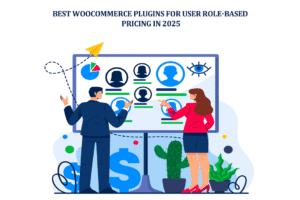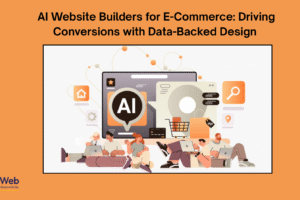Are you struggling to drive traffic to your fashion designing website? Are you looking for ways to boost your online visibility and attract more potential customers? Look no further! In this article, we will explore the key factors to keep in mind while doing SEO for your fashion designing website.
The Importance of SEO for Fashion Designing Websites
In today’s digital age, having a strong online presence is crucial for the success of any business, including fashion designing. With the ever-growing competition in the digital world, it’s essential to optimize your website to make it search engine friendly and stand out from the crowd. Search engine optimization (SEO) plays a vital role in increasing your website’s visibility and driving organic traffic.
When you optimize your fashion designing website for search engines, you are making it easier for potential customers to find you. By appearing higher in search engine results pages (SERPs), you can attract more targeted traffic, increase brand awareness, and ultimately drive more conversions. SEO helps you reach your target audience and establish your fashion designing business as an authority in the industry.
Understanding the Target Audience for Fashion Designing Websites
One of the first steps in effective SEO for fashion designing websites is understanding your target audience. Who are your ideal customers? What are their preferences, interests, and demographics? E.g. target audience of polo shirts. By gaining a deep understanding of your target audience, you can create content and optimize your website in a way that resonates with them.
For a fashion designing website, your target audience may include fashion enthusiasts, aspiring designers, or potential customers looking for unique and trendy top clothing brand. By understanding their needs and desires, you can tailor your SEO strategy to attract the right kind of traffic to your website. Conduct market research, analyze competitor websites, and use tools like Google Analytics to gather valuable insights about your target audience.
Keyword Research for Fashion Designing Websites
Keyword research forms the foundation of any successful SEO strategy. It involves identifying the words and phrases that your target audience is using to search for fashion-related content online. By incorporating these keywords into your website’s content, Meta tags, and headings, you can increase your chances of ranking higher in search engine results.
Start by brainstorming a list of relevant keywords related to fashion designing. Think about the specific services you offer, the types of clothing you specialize in, e.g. fancy dresses, party wear, bridal dresses etc. and any unique aspects of your brand. Use keyword research tools like Google Keyword Planner, SEMrush, or Moz Keyword Explorer to expand your list and identify high-volume, low-competition keywords.
Once you have a list of keywords, strategically incorporate them into your website’s content. However, make sure to use them naturally and avoid keyword stuffing, as search engines penalize websites that engage in this practice. Aim for a balance between optimizing your content for search engines and providing valuable, engaging information to your website visitors.
On-Page Optimization for Fashion Designing Websites
On-page optimization refers to the optimization techniques you apply directly on your website to improve its visibility and ranking in search engine results. It involves optimizing your website’s structure, content, Meta tags, and other elements that can impact its search engine visibility.
Start by optimizing your website’s title tags, Meta descriptions, and URLs. These elements provide search engines with important information about your website’s content. Use relevant keywords in your title tags and Meta descriptions to increase the chances of your website appearing in relevant search results. Keep your URLs short, descriptive, and keyword-rich.
Next, focus on optimizing your website’s content. Create high-quality, informative, and engaging content that is valuable to your target audience. Incorporate your target keywords naturally within your content, headings, and subheadings. Use descriptive alt tags for your images, as search engines also consider them when determining the relevancy of your website.
Lastly, make sure your website is easily navigable and user-friendly. Optimize your website’s structure by organizing your content into logical sections and using internal linking to connect related pages. Ensure your website loads quickly, as site speed is an important ranking factor. Mobile-friendliness is also crucial, as an increasing number of users access the internet through mobile devices.
Off-Page Optimization for Fashion Designing Websites
Off-page optimization refers to the techniques you use outside of your website to improve its search engine ranking. It involves building high-quality backlinks from reputable websites, increasing your website’s authority, and establishing your brand as a trustworthy source of information.
Start by guest blogging on relevant fashion websites and industry blogs. By providing valuable content to these websites, you can earn backlinks to your own website. Collaborate with influencers and fashion bloggers to promote your brand and generate buzz. Engage with your audience on social media platforms to increase brand awareness and drive traffic to your website.
Another effective off-page optimization technique is online reputation management. Monitor online reviews and respond promptly to any negative feedback. Encourage satisfied customers to leave positive reviews and testimonials, as these can enhance your brand’s reputation and credibility.
Content Strategy for Fashion Designing Websites
Content is king when it comes to SEO. Create a content strategy that aligns with your target audience’s interests and preferences. Regularly publish high-quality, relevant, and engaging content on your website’s blog or news section. This helps attract organic traffic, boost your website’s authority, and establish your brand as an industry leader.
Consider creating content that showcases your fashion designing expertise, such as style guides, trend reports, or fashion tips. Incorporate visual content, such as images and videos, to make your content more appealing and shareable. Optimize your content for social media sharing by including social sharing buttons and encouraging readers to share your content.
Remember to regularly update and refresh your content to keep it relevant and up-to-date. Search engines favor websites that provide fresh, valuable content to their users. Analyze your website’s performance using tools like Google Analytics to identify what content is resonating with your audience and adjust your content strategy accordingly.
Optimizing Images and Videos for Fashion Designing Websites
In the fashion industry, visual appeal is paramount. Optimizing your images and videos can not only enhance your website’s user experience but also improve its search engine visibility.
Start by optimizing your image file names and alt tags with relevant keywords. This helps search engines understand what your images are about and can increase your chances of appearing in image search results. Compress your images to reduce their file size and improve your website’s load time.
When it comes to videos, host them on popular platforms like YouTube or Vimeo and embed them on your website. Add relevant keywords to your video titles, descriptions, and tags. Create captivating video thumbnails to increase click-through rates. Remember to optimize your videos for mobile devices, as an increasing number of users consume video content on smartphones and tablets.
Mobile Optimization for Fashion Designing Websites
With the rise of mobile devices, optimizing your fashion designing website for mobile is no longer an option but a necessity. Mobile optimization refers to the process of ensuring your website is responsive, user-friendly, and fast-loading on mobile devices.
Start by using a responsive web design that automatically adjusts your website’s layout and content based on the user’s device. This provides a seamless user experience across different screen sizes and improves your website’s mobile-friendliness. Test your website on various mobile devices and screen sizes to ensure it displays correctly.
Optimize your website’s load time on mobile devices by minimizing the use of large images, videos, or other elements that can slow down your website. Use lazy loading techniques to prioritize the loading of above-the-fold content and defer the loading of non-essential elements.
Lastly, optimize your website’s mobile navigation. Make sure your menus are easy to use and navigate, and your buttons and links are large enough for users to tap with their fingers. Avoid using Flash or other technologies that may not be supported on all mobile devices.
Tracking and Analyzing SEO Performance for Fashion Designing Websites
Tracking and analyzing your SEO performance is essential to measure the effectiveness of your SEO efforts and make informed decisions for your fashion designing website.
Start by setting up Google Analytics on your website to track important metrics like organic traffic, bounce rate, average session duration, and conversion rates. This helps you understand how users are interacting with your website and identify areas for improvement.
Monitor your website’s keyword rankings regularly to see how well your SEO efforts are paying off. Use tools like SEMrush or Moz to track your keyword positions and identify opportunities for optimization.
Pay attention to your website’s backlink profile. Monitor the number and quality of backlinks pointing to your website, as well as any toxic or spammy links that may harm your website’s ranking. Use tools like Ahrefs or Majestic to analyze your backlink profile and take necessary actions to improve it.
Conclusion and Final Tips for Successful SEO of Fashion Designing Websites
Optimizing a fashion designing website for search engines is a continuous process that requires ongoing effort and monitoring. By implementing the strategies discussed in this article, you can improve your website’s visibility, attract targeted traffic, and increase your online presence.
Remember to always keep your target audience in mind when creating content and optimizing your website. Provide valuable, engaging, and visually appealing content that resonates with your audience. Conduct thorough keyword research and strategically incorporate keywords into your website’s content. Build high-quality backlinks from reputable sources and engage with your audience on social media platforms.
Regularly track and analyze your SEO performance using tools like Google Analytics, SEMrush, or Moz. Stay up-to-date with the latest SEO trends and algorithm updates to ensure your fashion designing website remains competitive in the ever-evolving digital landscape.
With a well-executed SEO strategy, your fashion designing website can climb the ranks of search engine results, attract more organic traffic, and ultimately drive more conversions. So, don’t wait any longer. Start implementing these SEO tips and take your fashion designing business to new heights of success!














